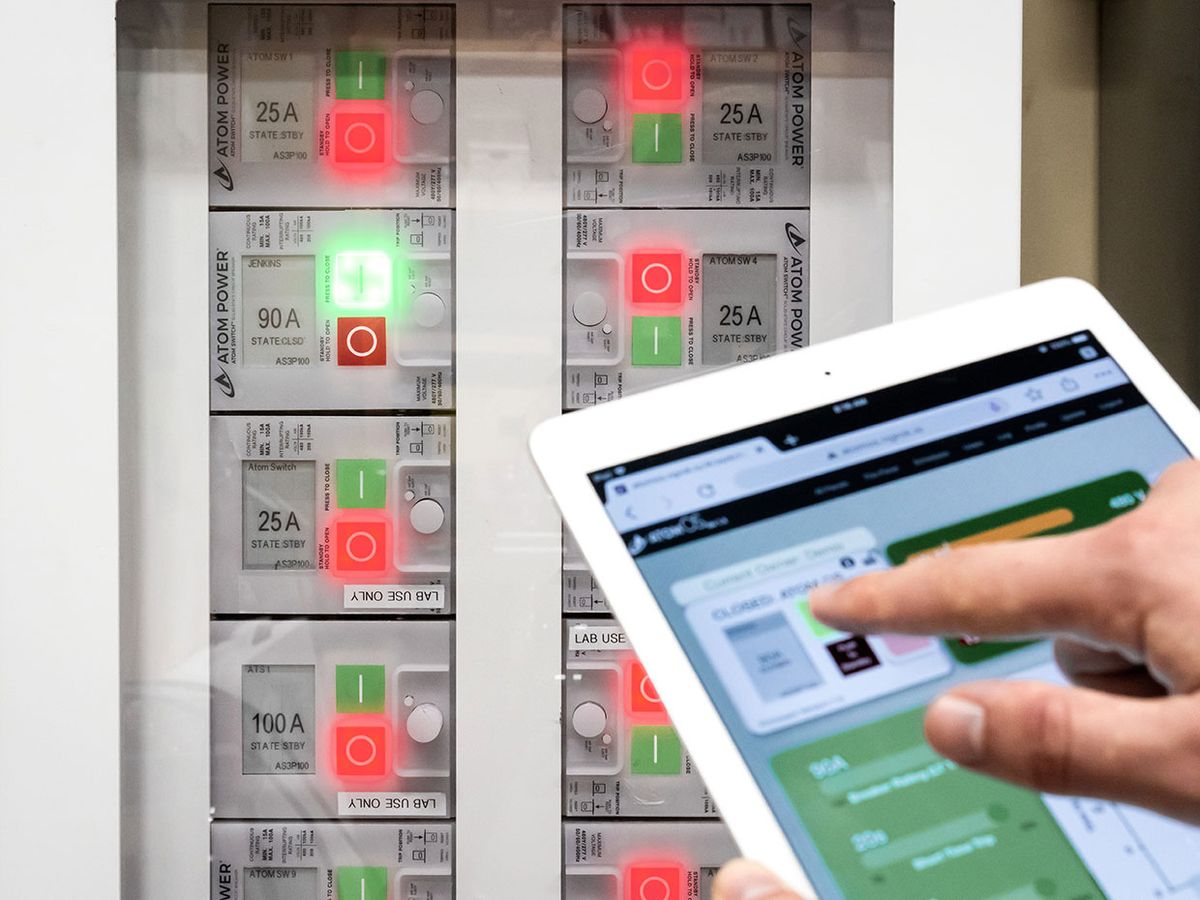In the dark, dank depths of your home basement hangs a drab gray box that guards the building’s electrical circuits. The circuit breakers inside switch off current flow when there is risk of an overload or short circuit, keeping you safe from fires or electrocution. It’s a critical job, and one that breakers have been doing with a fairly simple, 140-year-old electromechanical technology.
But circuit breakers are about to get a digital overhaul. New semiconductor breakers that combine computing power and wireless connectivity could become the hub of smart, energy-efficient buildings of the future.
“It’s like going from a telephone that just makes calls to a smartphone with capabilities we’d never imagined before,” says Ryan Kennedy, CEO and co-founder of Atom Power in Charlotte, North Carolina. “This is a platform that changes everything in power systems.”
Digital circuit breakers have been a holy grail in power engineering circles. Atom Power has now become the first to earn certification from the Underwriters Laboratory (UL) for its product, which combines breakers based on silicon carbide transistors with software. While UL approval isn’t legally required, it’s the industry safety standard for commercial use.
Breaker panels are the gateway to every electric circuit and appliance in a building. But those appliances themselves, and the way we use power and interact with the grid, are changing. “We don’t just turn stuff on and off anymore,” Kennedy says. Today, meters, load controllers, surge-protection devices, power-transfer switches, and demand management systems are found in every building to manage energy use. These systems are added on top of circuit breakers.
Intelligent, connected circuit breakers could replace those systems. They would be a one-stop shop to monitor energy use, control heating and lighting, charge electric cars at off-peak times, and switch between solar panels and the grid. “The breaker can perform the functions that a dozen different pieces of equipment do today,” Kennedy says.

Today’s circuit breakers are simple electromechanical switches. If current through a small electromagnet exceeds a certain level, the energy of the magnet throws off a mechanical switch. The mechanical process takes a few milliseconds.
Atom Power’s digital breaker works 3,000 times faster. It is essentially a large silicon carbide transistor circuit that measures load current and switches the transistor off when the current level is dangerous. The user can choose to wire the panel into a wireless router or into a closed LAN network, but the circuit breaker can run autonomously without an online connection.
Compared to silicon, silicon carbide transistors work at higher temperatures and switching speeds. The breaker detects a short circuit and cuts it off in 10 microseconds, says Denis Kouroussis, the company’s CTO and co-founder. That speed, he says, is crucial for preventing often-fatal arc flashes—explosive fireballs triggered by short circuits—in the large, high-voltage breakers found in commercial and industrial buildings, which is Atom Power’s target market.
The multibillion-dollar circuit breaker market is dominated by manufacturers such as Siemens, ABB, Eaton, Toshiba, and Schneider Electric. Most have attempted to make digital breakers. Work on solid-state circuit breakers has been underway for decades, but the materials science and computing power wasn’t advanced enough to make effective solid-state breakers even 10 years ago, Kennedy says. “There’s sensing and computation within each breaker so it’s hyper-fast but also smart.”
Siemens, ABB, and Eaton have all invested in Atom Power. But Eaton is also working on its own technology. In 2017, the company teamed up with Electric Power Research Institute and a dozen utilities to install its breakers in about 80 buildings. Stockholm, Sweden-based Blixt is working on digital breakers for the residential market.
The high cost of solid-state breakers is still a hurdle. Kennedy says their digital breaker costs two to five times as much as a mechanical breaker. But the cost of silicon carbide technology is coming down. And he thinks industrial customers should be willing to pay the extra price for a smart, safe product that should also potentially replace multiple other components in a building's electrical system
The company’s second-generation product that “cuts price in half and doubles performance” will be released in July and has several pre-orders already, says Kennedy.
Prachi Patel is a freelance journalist based in Pittsburgh. She writes about energy, biotechnology, materials science, nanotechnology, and computing.



